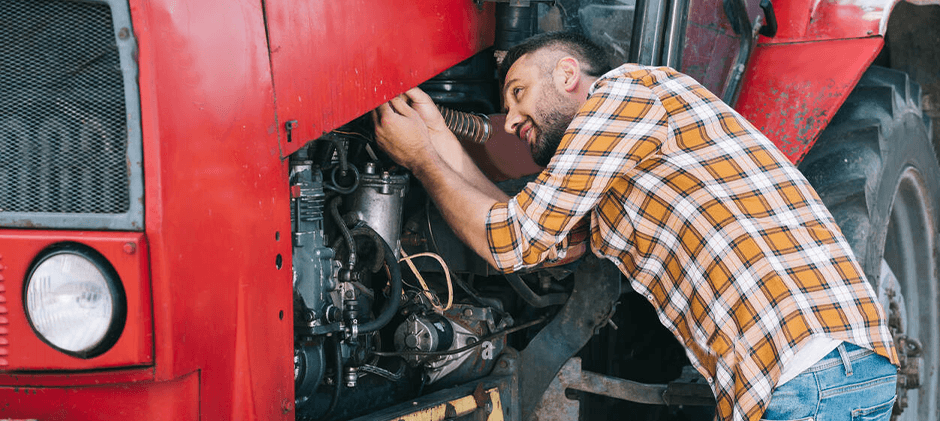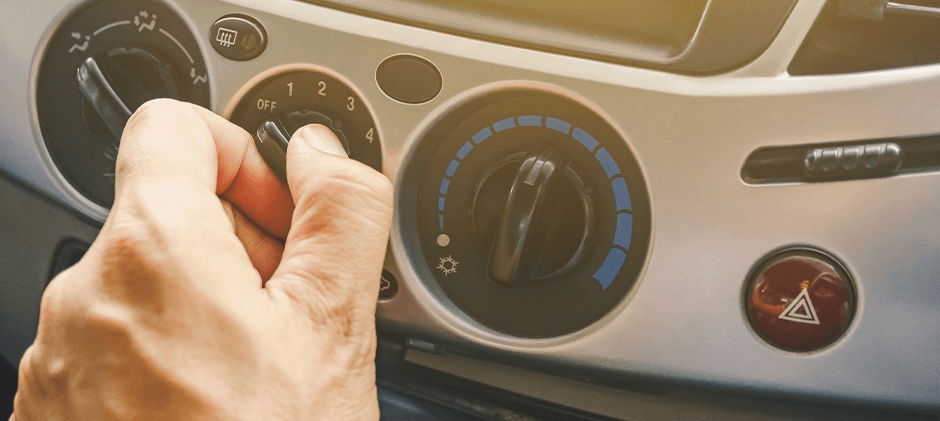In seasons such as summer and winter, when the air conditioner is often utilized, the circumstance that the equipment, after initiation, at once proceeds into cessation, may bring about a feeling of vexation. The possible causations may reside in the reduction of voltage, the tripping of the air breaker, or the looseness of the circuit. This article carries out an analysis upon eight ordinary causes that may lead to such a condition, and furthermore, it provides the preliminary self-diagnosis so as to assist you in better exclusion of the fault and in the repair of the equipment.
Is Your Vehicle Stalling When Turning on the AC?
An engine stall refers to the machine unexpectedly stopping its operation. If this kind of situation happens exactly at the moment when you are starting the air conditioning, it indicates the existence of a potential problem. The air conditioning system will bring a great load to the engine. If the performance of the engine idle control system is weak, or if any component in the air conditioning system malfunctions, the engine cannot endure the additional load, and finally stops running. Frequent stalling is not merely an annoyance, but is a warning signal. Solving the root cause is extremely crucial for preventing more serious and expensive damage in the future.
Basics of Vehicle Air Conditioning (What & How It Works)
Before diagnosing the problem, let us quickly review the working principle of the air conditioning system of your equipment. We can regard it as a heat-transfer system. Its function is not to produce cold, but to dissipate the heat inside the cabin to the outside.
This is realized by several key components working collaboratively:
- Refrigerant: A special chemical substance that can easily convert between liquid and gas.
- Compressor: The core of the system. Driven by the serpentine belt of the engine, the AC compressor compresses the refrigerant gas, making it extremely hot.
- Condenser: This component is located near the engine radiator, cooling the high-temperature, high-pressure refrigerant gas into liquid, and releasing its heat to the outside air.
- Evaporator: Located inside the HVAC unit of the cabin, this is where the magic happens. The cooled liquid refrigerant expands back into a gas, becoming very cold in the process. The blower motor pushes the cabin air through the chilled evaporator, providing cold air to you.
The key point is that the compressor needs the engine power to operate. When the air conditioner is turned on, the compressor starts, which adds a significant load to the engine.

8 Reasons Vehicle Stalls When AC Is ON
When a healthy engine is at idle, its computer (ECU) knows to slightly increase the RPMs to compensate for the added load of the AC. If the engine stalls instead, it’s because the load is far greater than expected, or the engine is unable to respond. Here are the eight most common culprits in heavy equipment.
1. Seized AC Compressor
The compressor is a kind of pump containing moving components internally. If the compressor loses lubrication or fails due to aging, these internal components may become locked, that is, “seized.”
- Cause of Stall: A seized compressor is like a wheel being locked. When the air conditioning clutch engages, it tries to rotate this locked pump. This will produce tremendous resistance on the serpentine belt, thereby bringing a sudden, enormous load to the engine. At low idle, the engine cannot overcome this resistance, and it will immediately stall.
2. Failing Compressor Pulley Bearing
The compressor has a pulley, upon which the serpentine belt is mounted. As the engine is operating, this pulley rotates freely on its bearing. When the air conditioner is off, only the pulley is rotating. When the air conditioner is on, the clutch engages, and the pulley drives the internal shaft of the compressor.
- Cause of stalling: This bearing may fail independently of the compressor itself. If the bearing seizes, the pulley can no longer rotate freely. This will generate continuous severe friction on the belt, imposing a heavy load on the engine even when the air conditioner is off. When the air conditioner is turned on, the additional load of the compressor itself becomes the final straw, causing the engine to stall.
3. Defective Compressor Clutch
The air conditioner clutch is an electromagnet that engages the compressor pulley with the internal shaft of the compressor.
- Cause of stalling: Clutch failure may cause problems in two ways. The clutch may partially seize, creating continuous resistance that worsens when fully engaged. Or, it may have an internal short circuit; once the short occurs, it interferes with the vehicle’s electrical system, causing the electronic control unit (ECU) to malfunction, and the engine shuts down.
4. Excessive Refrigerant Pressure
An AC system is designed to operate within a specific pressure range. The system can be overcharged with refrigerant during a faulty service, or a blockage in the system can cause pressure to build up to dangerous levels.
- How it causes a stall: Extremely high pressure in the system makes it incredibly difficult for the compressor to do its job. It’s like trying to pump air into a tire that’s already full. The compressor has to work much harder, drawing excessive power from the engine and causing it to stall under the strain.
5. Worn or Slipping Serpentine Belt
The serpentine belt transfers power from the engine’s crankshaft to all the accessories, including the AC compressor. Over time, these belts stretch, crack, and lose their grip.
- How it causes a stall: When you turn on the AC, the compressor clutch engages, adding a sudden load. A worn belt might slip on the compressor pulley, then grab, then slip again. This erratic, jerking load sends confusing signals to the engine’s ECU, which can’t maintain a stable idle, leading to a stall.
6. Faulty Idle Control System
Unlike old-style automobiles, modern heavy-duty diesel engines are no longer equipped with a simple “idle air control valve.” Instead, the Engine Control Unit (ECU) manages idle by precisely controlling fuel injection. It relies on sensors to understand the engine load.
- Cause of Stalling: If critical sensors malfunction or the ECU itself fails, it may not know to increase fuel to compensate for the air conditioner startup. The engine requires a stable, low-load idle, and the sudden demand of the compressor is too great for the engine. Without the ECU’s assistance, the engine cannot respond.
7. A Critical Electrical Problem
The air conditioning system connects to the machine’s electrical network. The clutch is controlled by a relay, and the relay is managed by the ECU and various pressure sensors.
- Cause of Stalling: In harsh, high-vibration worksite environments, electrical failures are common. Ground wires may corrode, relays may fail, or the AC clutch circuit may short. This can reduce system voltage or interrupt signals when the AC starts, enough to disturb the ECU and cause the engine to stop.
8. Clogged Air or Fuel Filters
This is an engine problem disguised as an air conditioning issue. Your engine requires clean air and fuel to operate efficiently.
- Cause of Stalling: If the engine’s air filter or fuel filter is severely clogged, the engine struggles to draw in air and obtain sufficient fuel. Even under normal conditions, it is on the edge of stalling. The extra load from the AC compressor becomes the final push it cannot endure, ultimately causing it to stop running.

Solutions for Vehicle Stalling When AC Is Activated
- Routine Inspection: Regularly open the engine hood and visually inspect whether the serpentine belt has cracks or ice. Listen to the front of the air conditioning compressor for any frictional or squealing sounds, which may indicate the bearing is having a fault.
- Maintain Cleanliness: Keep the engine compartment, especially the condenser fins, clean and free from dust and debris. A clean condenser can make the system operate under lower pressure, thereby reducing the load of the engine.
- Proper Maintenance: Ensure any air conditioning maintenance is performed by technicians who understand the exact refrigerant capacity of your machine. Excessive refrigerant charging is a common cause of the problem.
- Do Not Ignore Engine Malfunction: If the “check engine” light illuminates, handle it immediately. Potential engine issues may be exacerbated by the load of the air conditioning system.
- Use Quality Parts: When components such as the compressor or clutch fail, people easily choose the cheapest repair solution. However, investing in high-quality aftermarket air conditioning parts can ensure reliability and avoid repeated repairs. High-quality replacements usually meet or exceed original specifications and do not require incurring high cost, thereby providing optimal value and minimizing downtime.
Can a Bad AC Compressor Cause Equipment to Stall?
Yes, absolutely. As we’ve seen, a bad AC compressor is one of the most direct causes of an engine stalling. Here’s a summary of how:
- Mechanical Seizure: If the internal parts of the compressor lock up, it creates an impossible load for the engine to turn at idle, causing an immediate stall.
- Bearing Failure: If the pulley bearing seizes, it creates massive belt friction, which can stall the engine.
- Clutch Malfunction: A faulty clutch can create excessive drag or electrical faults that lead to a stall.
A failing compressor puts an enormous and abnormal strain on the engine, which is why it’s a primary suspect whenever a machine stalls, specifically when the AC is turned on.
In Summary
When the air conditioning initiates, the engine then proceeds into an abrupt cessation, which is manifestly an unmistakable distress proclamation from the heavy-duty equipment itself. The origin of this dilemma is almost without exception attributed either to the excessive burden generated by the air conditioning components or to the incapacity of the engine management system in accommodating even the ordinary operational load. By executing a systematic scrutiny of the most recurrent causes—ranging from the compressor’s seizure to the mere triviality of electrical aberrations—you may delineate the precise source of the malfunction. Prompt repair, periodic maintenance, together with the employment of dependable replacement parts, constitutes the most efficacious stratagem to circumvent a stifling, soundless cabin.
